Updated July 2024.
The digital age has transformed how we seek and consume information, with search engines being at the forefront of this revolution. Central to the mechanics of these search engines is the Search Engine Results Page (SERP), a term that, while familiar to many, holds layers of complexity and significance.
In this post, we’ll go deeper into the components of SERP, its evolution, strategies for optimization, and future trends.
TABLE OF CONTENTS:
Introduction to SERP: What It Is and Why It Matters
Mastering the Search Engine Results Pages (SERPs) is crucial for anyone looking to make a mark online. But what exactly is a SERP? Simply put, it’s the page(s) you see after entering a query into a search engine like Google, Bing or Yahoo. However, there’s much more to SERPs than meets the eye.
Understanding the Basics of the SERPs
At its most basic, a SERP is what you see after you type a query into a search engine:

This page displays a list of results that the search engine deems most relevant to your query. These results can include a variety of formats: from standard organic listings to paid advertisements, video results, image galleries, news snippets, and more. Each of these is designed to provide the most relevant and useful information based on your search query.
At its core, a SERP is the frontline of the internet’s battleground for visibility. Whether you’re a business owner, a content creator or a digital marketer, your presence on this page can make or break your online success. With 8.5 billion searches conducted every day, appearing on the first page of the SERPs can mean the difference between obscurity and recognition.
But why does SERP hold such significance?
Well, it’s all about visibility and traffic. The higher your website ranks in the SERPs, the more likely users are to click on your link, which in turn drives organic traffic to your site. This traffic is not just substantial in volume but also high in quality, often consisting of individuals who are actively seeking information or solutions that you provide.
The Importance of SERPs in Digital Marketing and SEO
Understanding the SERPs is more than just knowing what they are; it’s about grasping their impact on digital marketing strategies. From organic search results to paid advertisements and from featured snippets to local listings, each component of a SERP plays a distinct role in how information is conveyed to the user.
The first page of Google captures as much as 71.3% of search traffic clicks.
And this figure drops significantly as one moves to the second and third pages.
Optimizing your content for these varied elements can enhance your online presence, making your website more accessible and visible to your target audience.
As search engines continue to refine their algorithms, the dynamics of the SERPs keep changing, making it a fascinating and challenging aspect of SEO. Whether you’re looking to improve your website’s search engine ranking or aiming to understand the digital marketing landscape better, comprehending SERPs is an essential step.
For businesses and digital marketers, the value of SERPs cannot be overstated. Ranking higher on SERPs generally correlates with increased website traffic.
Case Study: SERP Ranking Results
Here’s a quick look at the results we got for a client whose presence in the SERPs was dismal even though they had a great business.
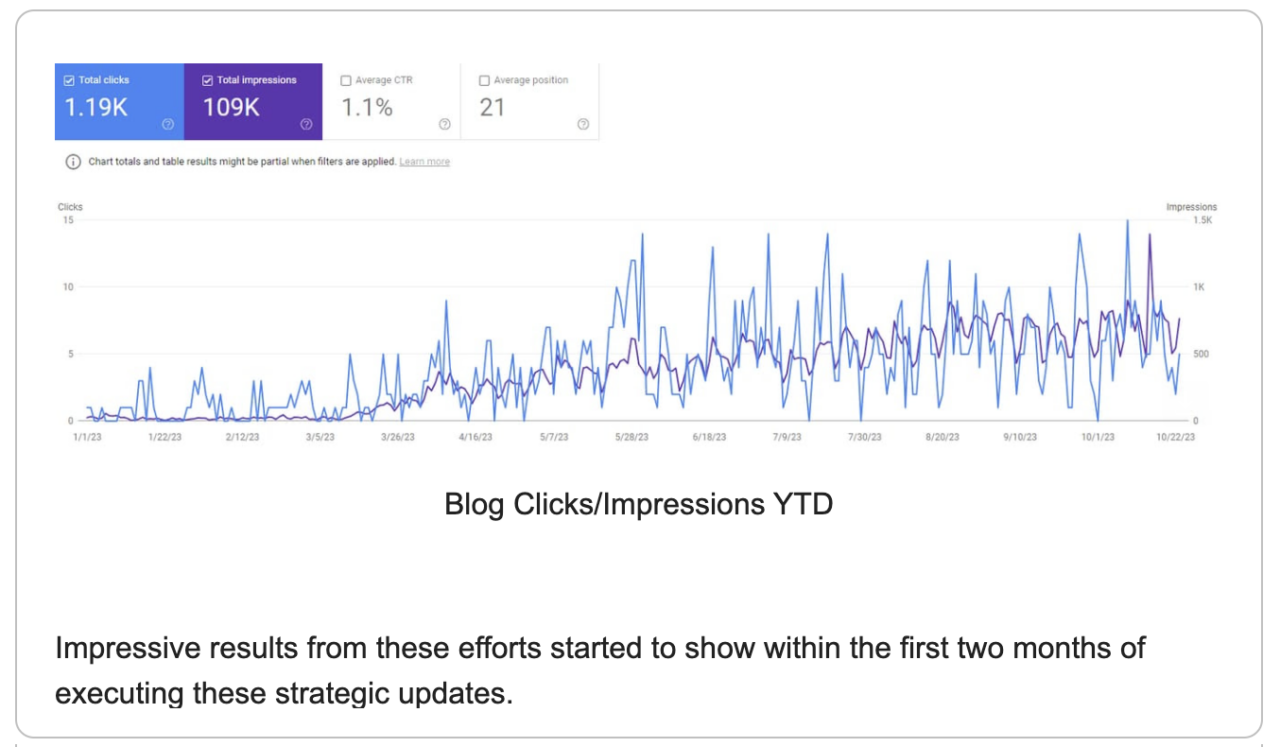
Within two months of our tackling their issue from all sides of SEO, they had a 1,540% increase in impressions in the SERPs.
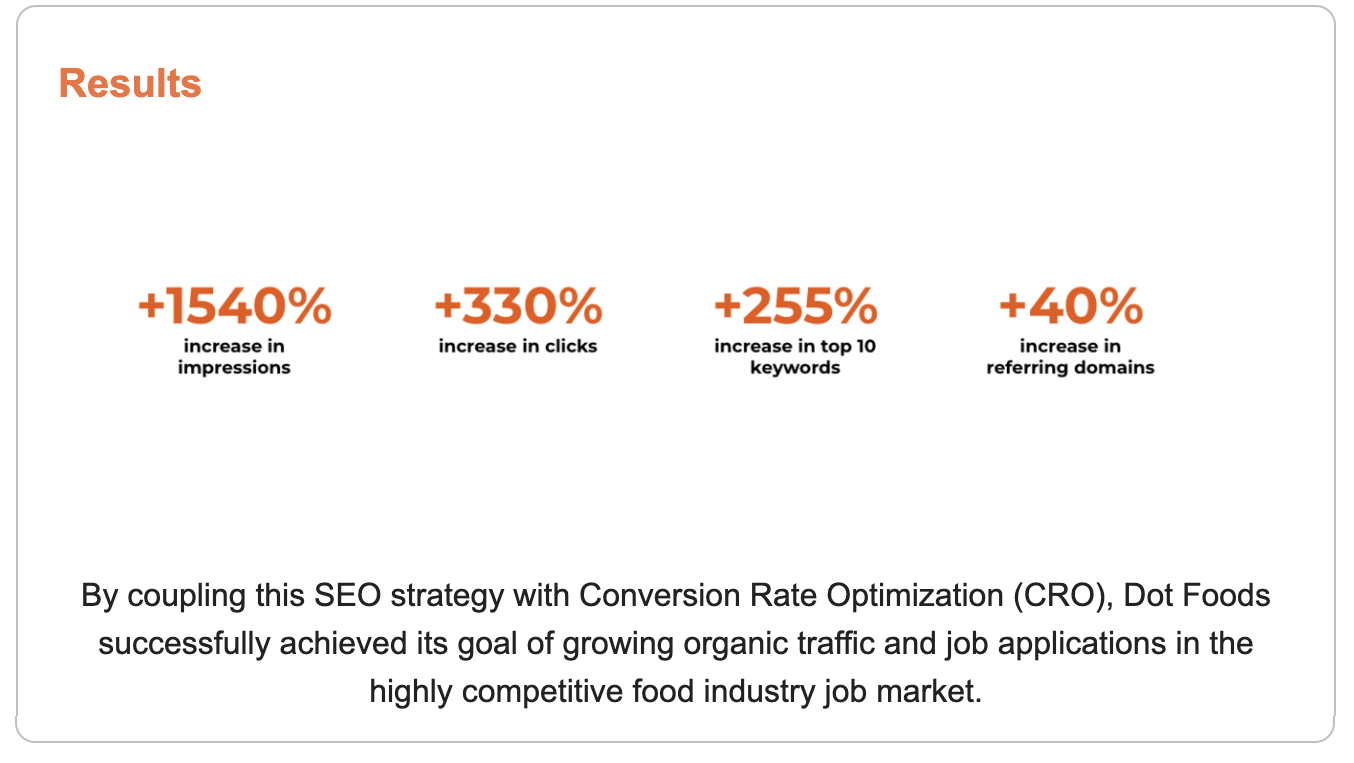
SERP: More Than Just Rankings
However, SERP importance extends beyond mere rankings. It’s a window into the user’s intent and behavior, offering insights into what people are searching for and how they phrase their queries. This understanding is vital for crafting SEO strategies that align with user intent, making content not only visible but also relevant and engaging.
From a user’s perspective, SERPs serve as a gateway to the vast content available online. Search engines continually refine their algorithms to enhance the relevance and quality of the results displayed. Features like the ‘People also ask’ box, local business listings, and knowledge graphs provide users with more targeted and specific information, often answering their queries directly on the SERP itself.
That’s why keeping up with SERP trends is crucial.
The landscape of SERPs is not static, it’s dynamic and constantly evolving. Google, for instance, regularly updates its algorithm, impacting how results are ranked and displayed. These changes can significantly alter the effectiveness of existing SEO strategies. Staying abreast of these trends and adapting strategies accordingly is crucial for maintaining and improving online visibility.
Check out our video 600% Increase Your Google Ranking Without Breaking The Bank to learn a new way to see optimum results in the SERPs:
Components of a SERP: Breaking Down the Elements
Understanding the components of a digital marketing Search Engine Results Page is key to mastering SEO and improving a website’s online visibility. A SERP is not just a list of links but, rather, a complex array of different elements, each serving a unique purpose and catering to various user needs.
These are the main elements of a SERPs page:
- Organic Listings. Organic listings are the core of any SERP. These are the non-paid results that search engines deem most relevant to the user’s query, based on factors like keywords, website authority, and content quality. Ranking high in organic listings is a primary goal for SEO, as these results are generally perceived as more credible by users.

- Paid Advertisements (PPC). At the top and bottom of most SERPs are paid advertisements, often referred to as PPC (pay-per-click) ads. These are marked as ‘Ad’ and are a part of search engine advertising. Businesses bid on keywords to have their ads appear for specific searches, offering a way to gain visibility for competitive terms.
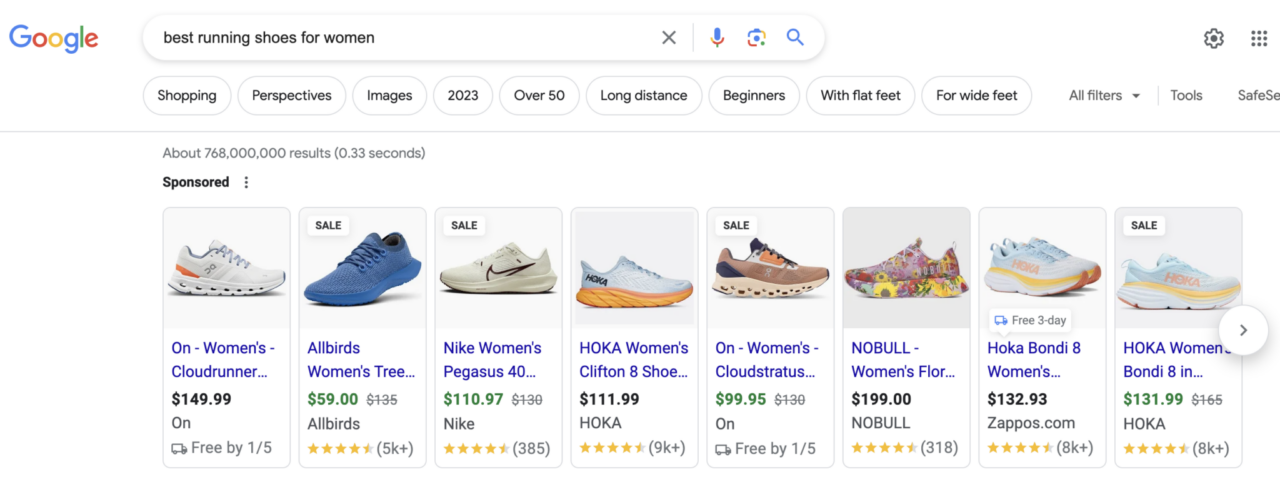
- Featured Snippets. Featured snippets are selected search results that are featured at the top of Google’s organic results. They aim to answer the user’s question right away, often pulled directly from websites and presented in a box. Being featured here is highly coveted, as it can significantly increase visibility and traffic.

- Local Listings and Maps. For queries with local intent, SERPs include a “Local Pack” consisting of business listings and a map. This section displays businesses relevant to the query along with important information like addresses, reviews, and operation hours, crucial for local SEO.
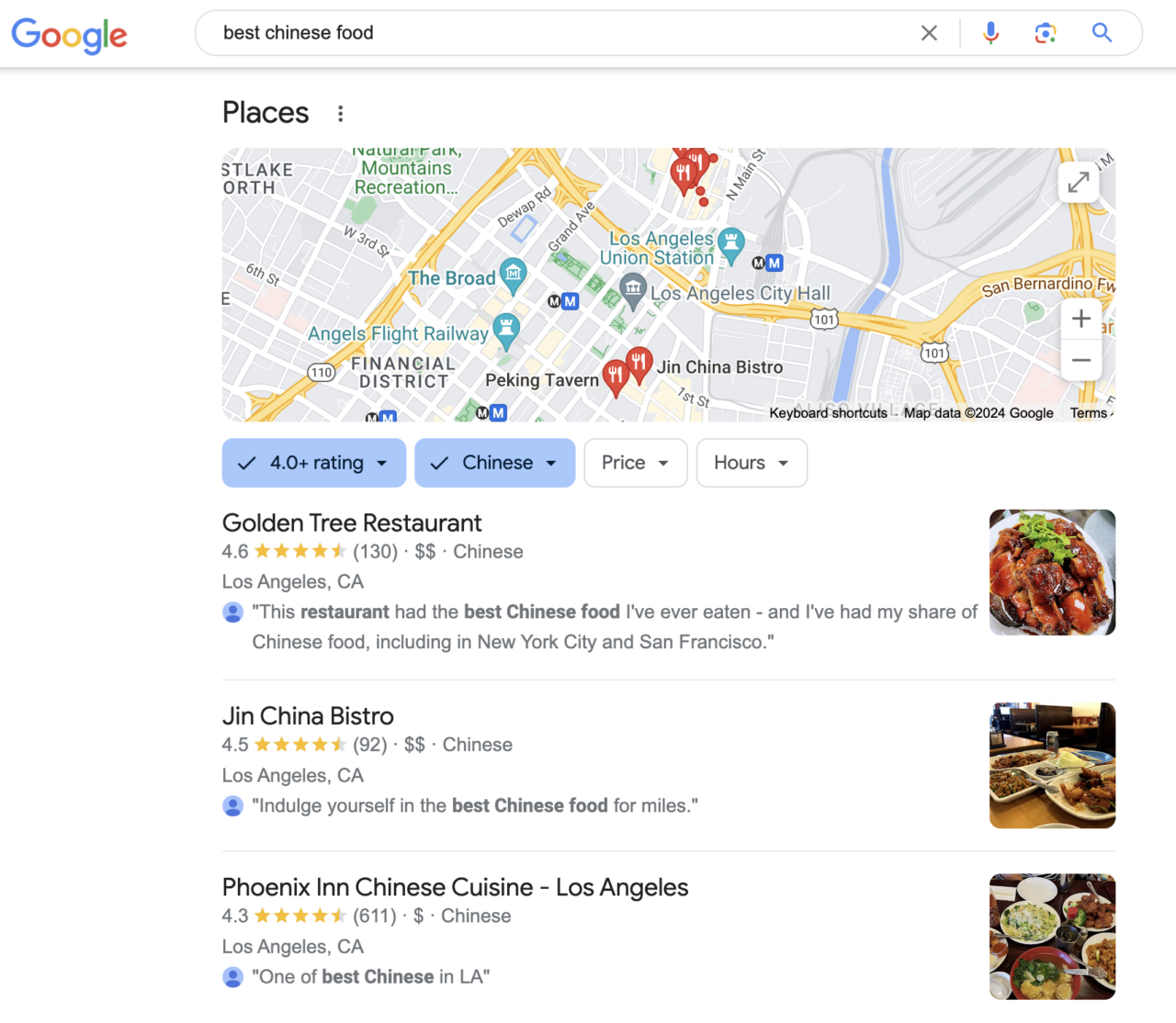
- Knowledge Graphs and Panels. Knowledge panels and graphs appear for searches about specific entities like celebrities, places, organizations, etc. They provide concise, authoritative information and are generated from various data sources, including Wikipedia and the CIA World Factbook.

- Image, Video and News Results. Search engines also integrate image, video and news results into the SERPs. These elements are particularly important for visual and topical queries and can be optimized through SEO practices specific to these formats.
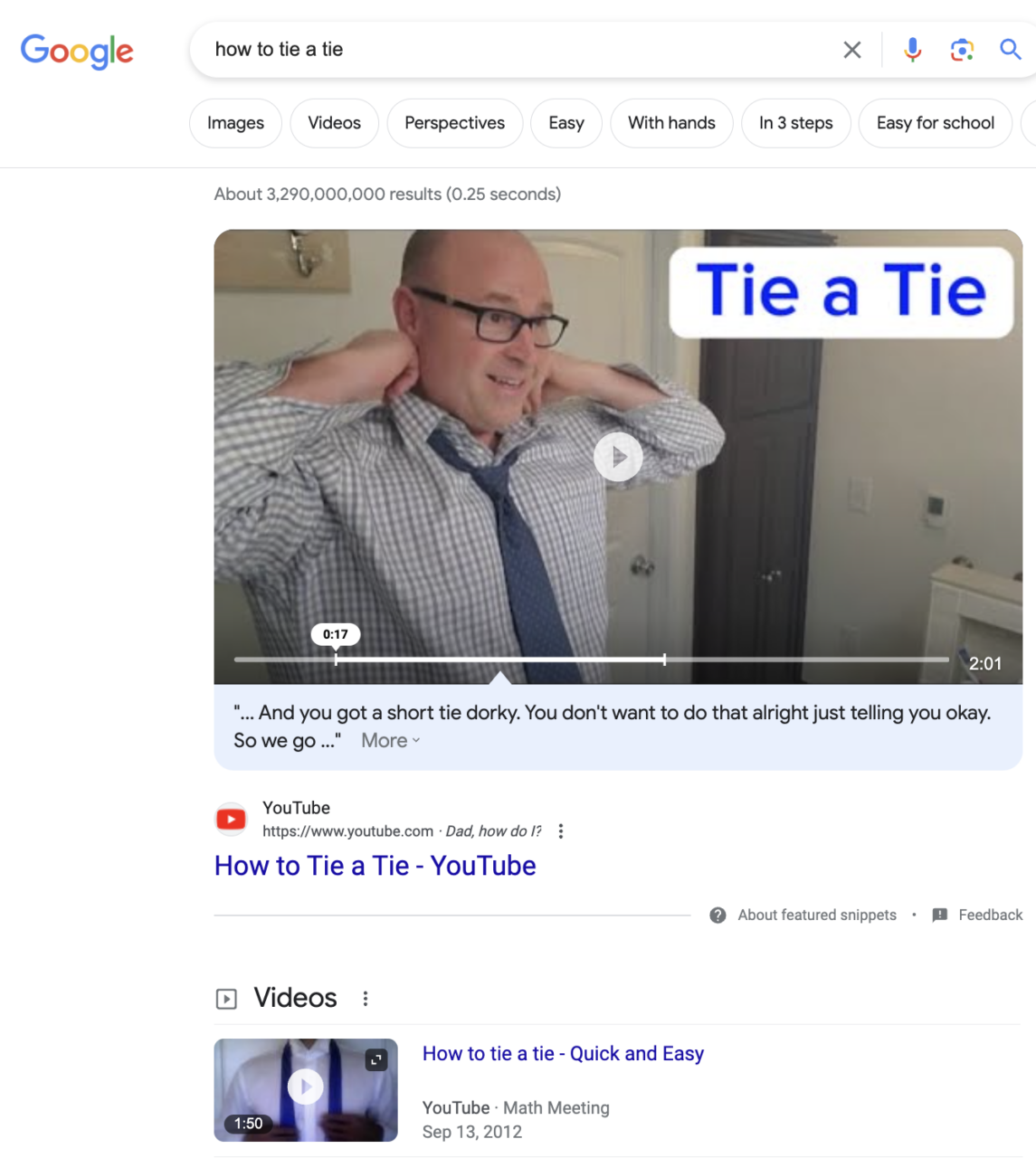
So, a SERP is a mosaic of different elements, each playing a pivotal role in how information is displayed and accessed. Understanding these components is essential for any SEO strategy, as it allows for a more targeted approach to improving a website’s search engine visibility.
Need help tackling the challenge of online visibility so you can see measurable increases in your organic traffic? Single Grain’s SEO experts can help!👇
The Evolution of the SERPs
The Search Engine Results Pages have undergone significant transformation since the inception of search engines. This evolution reflects not only technological advancements, but also changes in user behavior and expectations.
The Early Days of SERPs
In the early days of the internet, SERPs were quite basic, displaying only a simple list of links with minimal formatting:
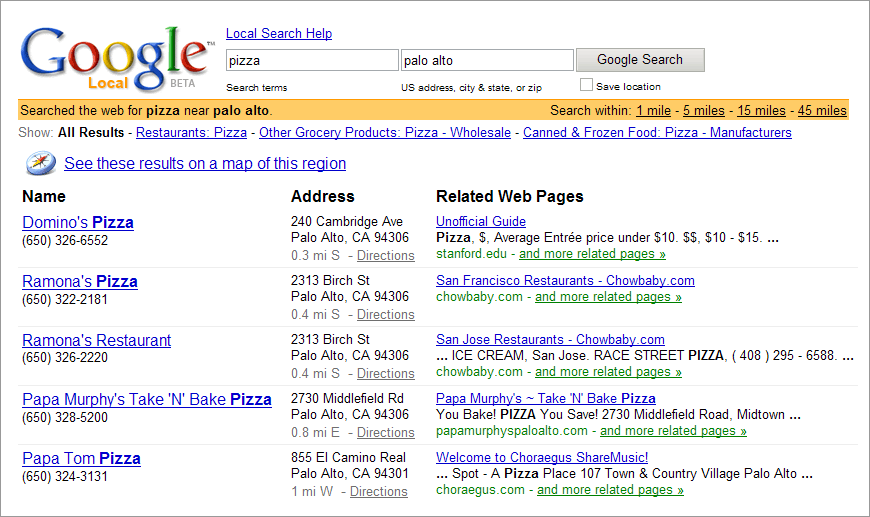
The ranking was primarily based on keyword density and the quantity of backlinks. This simplicity, however, often led to irrelevant and low-quality results.
The Advent of Sophisticated Algorithms
The introduction of more sophisticated algorithms marked a turning point in the evolution of SERPs. Search engines like Google began to prioritize factors like relevance, content quality, and user experience. This shift led to more useful and contextually relevant search results, setting a new standard for what users could expect from their search experience.
More on some of the recent algorithm updates below.
Impact of AI and Machine Learning
The integration of artificial intelligence and machine learning has further refined SERP functionality. These technologies enable search engines to understand user intent more accurately and to personalize search results, enhancing the overall user experience.
Recent Changes and Features
In recent years, SERPs have become much more dynamic and feature-rich. We’ve seen the introduction of:
- Featured Snippets: Quick answers pulled from web content, displayed at the top of SERPs.
- Knowledge Graphs: Panels and boxes providing concise, authoritative information on various topics.
- Local SEO Elements: Enhanced local business listings and maps for location-based queries.
- Rich Snippets and Structured Data: Enhanced listings with additional information like ratings, prices, and availability.
- Mobile-First Indexing: Prioritizing mobile-friendly websites in response to the increase in mobile searches.
Optimizing for the SERPs: Strategies and Best Practices
With such fierce competition, optimizing for the search engine results pages is critical for enhancing online visibility and driving traffic. Here are some effective strategies and best practices for SERP optimization.
1) Understanding User Intent
The foundation of SERP optimization is understanding user intent. Aligning your content with what users are searching for improves the chances of your website appearing in relevant searches.
There are typically four types of search intents:
- Informational: Users are looking for information or answers to their questions.
- Navigational: Users are looking for a specific website or webpage.
- Commercial: Users are researching products or services before making a decision.
- Transactional: Users are looking to make a purchase or complete a specific action.

Here’s an example of specific keywords to match each intent:

2) Quality Content Is Key
High-quality, relevant content is essential for ranking well on SERPs. This includes well-researched, informative and engaging content of various formats (blogs, videos, podcasts, infographics, etc.) that addresses the needs of your audience.
Regularly updating your website with fresh content also keeps it relevant and appealing to search engines.
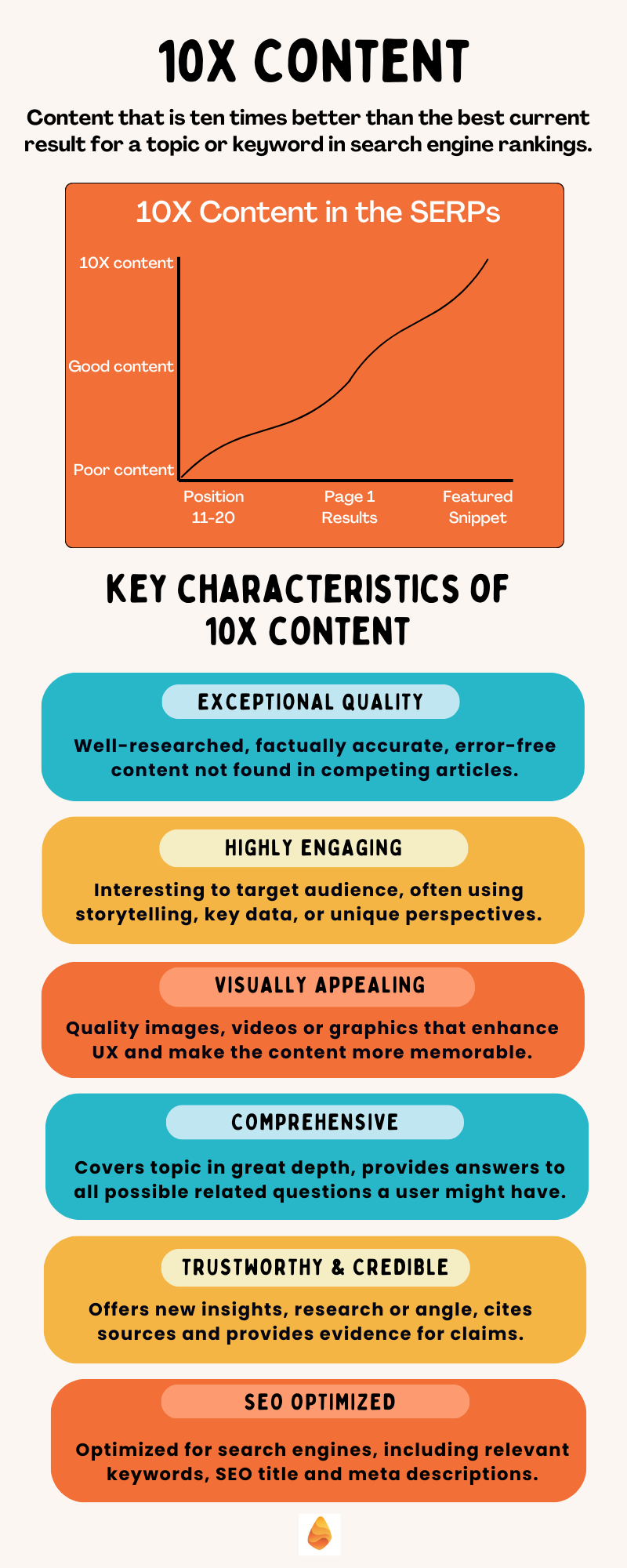
3) On-Page SEO Optimization
Optimizing individual pages (on-page SEO) is crucial. This includes using relevant keywords, creating engaging meta titles and descriptions, optimizing images, and ensuring a user-friendly page layout.
Structured data (also known as “schema markup”) can also enhance your SERPs listings with rich snippets, such as this example of schema markup for events:

4) Building a Strong Backlink Profile
Backlinks from reputable sites boost your website’s authority and ranking. Here are four reasons why they are super helpful when it comes to search engine optimization:
- Backlinks help Google find your website’s pages
- Backlinks increase your website’s overall credibility
- Backlinks drive more traffic to your website
- Backlinks build relationships
Focus on building a strong backlink profile through guest blogging, collaborations and creating shareable content.
5) Mobile Optimization and Page Speed
With the popularity of mobile search, making sure your website is mobile-friendly is non-negotiable. Additionally, page speed is a critical ranking factor; faster loading pages provide a better user experience and are favored by search engines.
Just want someone to do all the work for you? Single Grain’s SEO experts can help!👇
6) Leveraging Local SEO
For businesses targeting local customers, local SEO is key because:
46% of Google search queries are looking for local businesses.
This includes optimizing for local keywords, maintaining up-to-date local listings, and collecting positive reviews.

7) Paid Search Options
While organic SERP optimization is fundamental, paid search options like Google Ads can provide an additional visibility boost, especially for highly competitive keywords. There are many types of paid ads, including dynamic search ads:

8) Keeping Up with Algorithm Updates
Search engines frequently update their algorithms. These updates aim to refine the user experience, prioritize high-quality content, and counteract manipulative SEO practices. Staying informed, adapting your strategies to these changes, and being sure to check the SERPs regularly is essential for maintaining rankings.
Here are some notable recent updates and their implications:
- Core Algorithm Updates: Search engines regularly roll out core updates to improve the overall search experience. These updates often bring significant shifts in SERP rankings, impacting websites across various industries.
- BERT Update: The introduction of the BERT (Bidirectional Encoder Representations from Transformers) update by Google was a major leap forward. It enhanced the search engine’s understanding of natural language, particularly in comprehending the context of search queries. This update favored content that was more naturally written and user-focused, as opposed to being overly optimized for specific keywords.
- Mobile-First Indexing: With the increasing dominance of mobile searches, search engines have shifted to mobile-first indexing. This update means that the mobile version of a website is now considered the primary version for indexing and ranking. Websites not optimized for mobile devices have seen a drop in their SERP rankings.
- E-E-A-T Principle (Experience, Expertise, Authoritativeness, Trustworthiness): Recent updates have placed a greater emphasis on the E-E-A-T principle. Websites that demonstrate expertise, authoritativeness, and trustworthiness, particularly in ‘Your Money or Your Life’ (YMYL) topics, have been rewarded with better rankings.

- Page Experience Update: This update focuses on the user’s experience while interacting with a web page. Factors like loading speed, interactivity, and visual stability, collectively known as Core Web Vitals, play a significant role in determining SERP rankings:

- Featured Snippet Adjustments: Adjustments to featured snippets have altered how information is presented in SERPs. Websites appearing in a featured snippet often get a significant boost in visibility, making the competition for these spots more intense.
- Voice Search Optimization: Reflects the growing use of voice queries, emphasizing the need for conversational and natural language content.
- Image Search Update: Improved the way images are indexed and displayed in search results.
- Local Search Updates: Enhanced the accuracy and relevance of local search results.
Here’s a quick look at the difference between a Google Update and a Google Core Update:

Each of these updates has reshaped the SEO landscape in some way, making it imperative for digital marketers and website owners to stay informed and adapt their strategies. The overarching trend is a move towards a more user-centric approach, valuing quality content, mobile optimization, and overall user experience.
Learn more: Google Core Update March 2024: What Content Creators Need to Know
Future Predictions and Emerging SERP Trends
The SERPs has always been shaped by technological advances and changing user behaviors. Looking to the future, we can anticipate several trends and developments that will further transform how the SERPs function and how users interact with them.
Here are a few predictions of the future of the SERPs:
- AI and Machine Learning Enhancements. Artificial intelligence and machine learning will continue to play a pivotal role in shaping SERPs. These technologies will drive more personalized and contextually relevant search results, making SERPs more intuitive and user-friendly. For instance, Google’s Search Generative Experience (SGE) is a new way to search the web using generative AI that has an add to Sheets function that lets you “insert a search result directly into a spreadsheet”:

- Voice and Visual Search Ascendancy. Voice search is expected to grow with the increasing use of digital assistants. Similarly, visual search technology is advancing, allowing users to search using images or visual elements. These changes will necessitate a shift in how content is optimized for search.
- Increased Focus on User Experience. User experience (UX) will become even more critical. Factors like page speed, interactivity, and visual stability (Core Web Vitals) will be crucial in determining rankings. Websites that provide a seamless and engaging user experience will be favored in SERPs.
- Integration of Augmented Reality (AR). Augmented reality (AR) could be integrated into SERPs, offering immersive and interactive search experiences. This could revolutionize how products and services are showcased within search results. Google has already added a 3D and augmented reality feature in its search results for mobile devices:
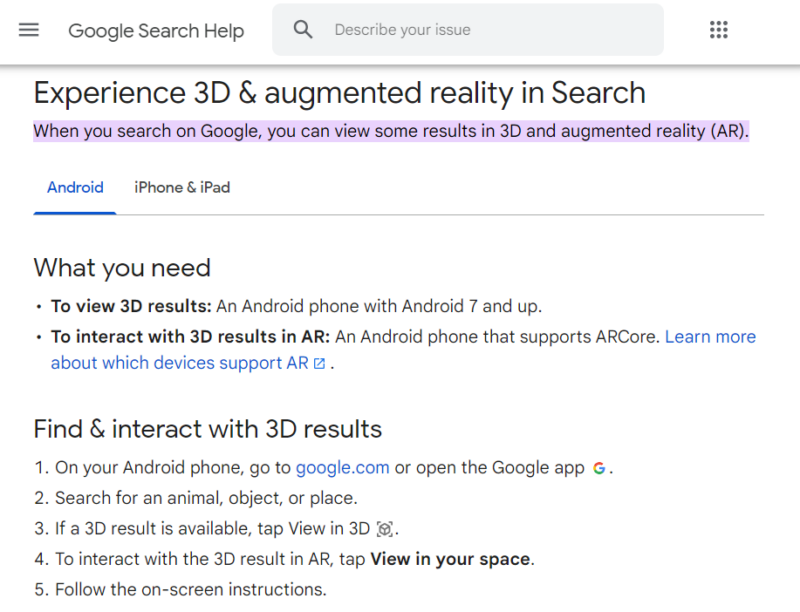
- Enhanced Local and Personalized Search. Local search will become more refined, providing more precise and relevant local content. Personalization will also increase, with SERPs becoming more tailored to individual search histories and preferences.
- Content Authenticity and Quality. As misinformation remains a challenge, search engines will likely place a higher emphasis on content authenticity and quality. Reliable sources and authoritative content will be crucial for gaining visibility.
- SERP Layout and Feature Changes. The layout of SERPs may undergo significant changes, with new features and types of content being prioritized. This could include more interactive elements or diverse types of media being integrated into the search results.
In a nutshell, the future of the search engine results pages lies in creating a more personalized, user-friendly and immersive search experience.
Last Word on the SERPs
As we’ve seen, the SERPs are not a static entity. They are a dynamic and ever-evolving aspect of search engines, reflecting changes in technology, user behavior and digital marketing strategies. This is why mastering the Search Engine Results Pages is key to online success.
The future of SERP promises further advancements, with AI and machine learning leading the way towards more personalized, user-friendly and immersive search experiences. As marketers and website owners, keeping a pulse on these trends and continuously refining SEO strategies will be key to maintaining visibility and relevance in search results.
If you’re ready to level up your online visibility with strategic optimization for the SERPs, Single Grain’s SEO experts can help!👇
Search Engine Results Pages (SERPs) FAQs
-
What does SERP mean?
SERP stands for “Search Engine Results Page.” It is the page(s) displayed by a web search engine in response to a query by a user. The SERPs list the results that are most relevant to the user’s search query, including a mix of organic search results, paid advertisements and SERP features.
-
What is an example of a SERP?
An example of a SERP page is the list of links that display after typing “best coffee shops near me” into a search engine like Google or Bing. This page will likely include a list of coffee shops ranked by relevance and proximity, along with additional SERP features such as maps, star ratings, reviews, and perhaps ads for coffee shops or coffee equipment.
-
What is SERP also known as?
SERP is also commonly known as the “search engine results page”, which is a direct explanation of the acronym itself. This term is widely used in digital marketing and SEO (Search Engine Optimization) circles to discuss how to improve the visibility and ranking of websites on search engines.
-
How do SERPs work?
The SERPs search engine works via algorithms to determine the most relevant and useful results for a user’s query. These algorithms take into account factors such as the content’s relevance to the search query, the quality and authority of the website, user engagement metrics, and the presence of SERP search engine features that enhance the search experience.
SEO SERP strategies are employed to optimize content and websites to rank higher in these search results, aiming to increase SERP visibility and drive more organic traffic to the site.



